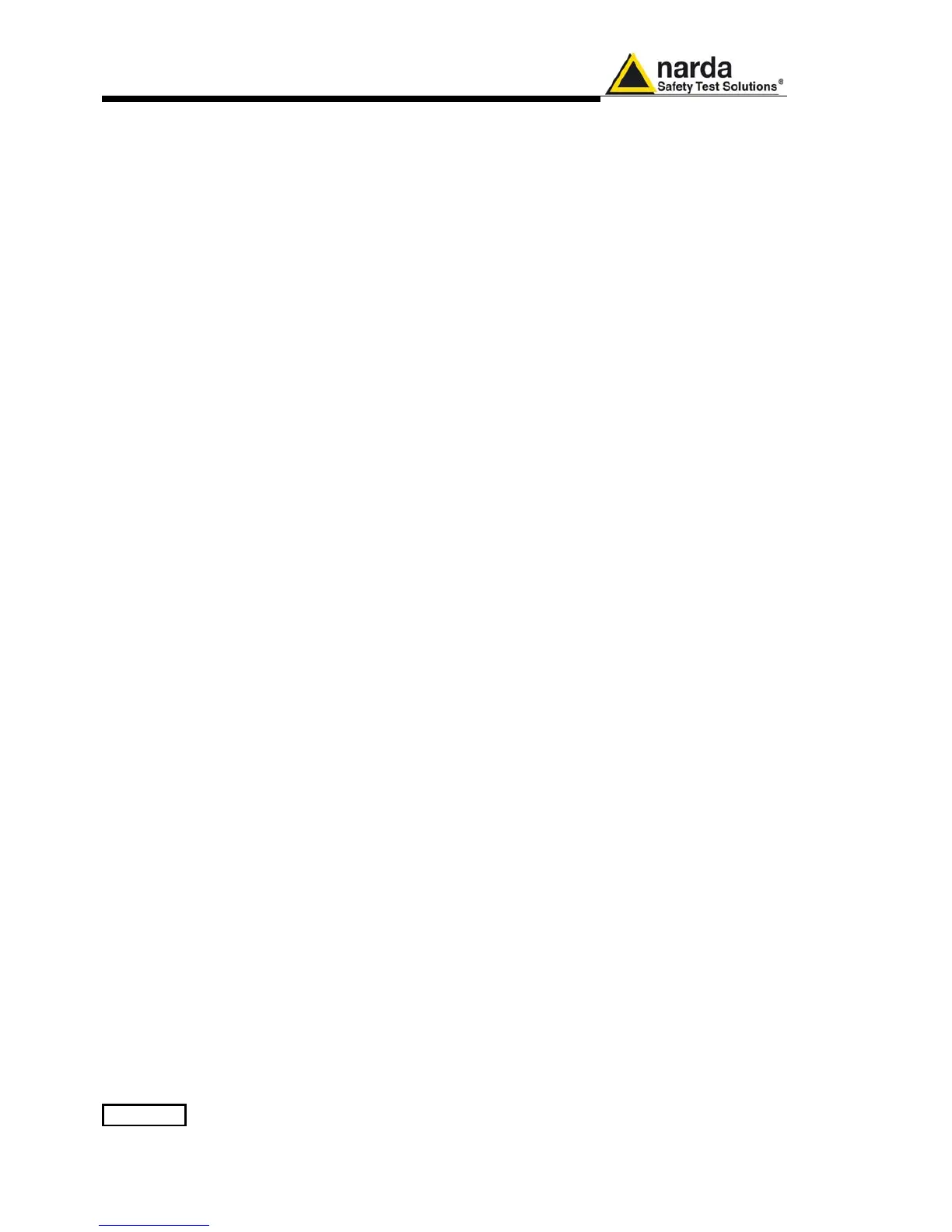14-14 Remote control
SDIS
Dyn;
RefLev;
This setting command sets both Display Dynamic and Reference Level.
Dyn represents the Display dynamic range shown And is expressed in dB. Value
must be 80 ,100, 120.
RefLevel represents the Display reference level (top of digram) shown end is
expressed in dBµV. Value must can range from 65dBµV and 145dBµV. Note that
reference level could be rounded by 9010 in order to best fit it.
The reply is DIS=OK which acknowledges the command has been granted or
o DIS =ERR 1 when Dyn is else than 80,100 or 120. The command is
ignored.
o DIS =ERR 2 when RefLevel is out of range. The command is ignored.
The command reflects the settings for all three modes: Manual, Sweep and
Analyzer.
Example:
#SDIS 100;110;*
Sets the display dynamic to 100 dB and reference level to 110dBµV.
SDMD a
This setting command switches the Demodulator; according the parameter (a)
which can be either On or OFF.
The reply is DMD =OK which acknowledges the command has been granted or
DMD =SERR if the command has been ignored.
Example: # DMD ON*
Example: # DMD OFF*
SDMV v
This setting command sets the volume of demodulator. The string (v) should be in
the range of 0 to 100.
The reply is DMV =OK which acknowledges the command has been granted or
DMV =SERR if the command has been ignored.
Example: #SDMV 50* Sets the volume of demodulator to half of the audio power.
SLDW n, freq;
levq, leva
This setting command is used for setting the custom double value limit frequency
by frequency. It consists of four fields as follows:
• n Is the index of frequency being written and it should range from 0 to 15
• freq Is the frequency, expressed in Hz (exponential notation allowed),
being written
• levq Is the level of the limit which refers to QPeak and is expressed in
dBµV
• leva Is the level of the limit which refers to the alternate detector and is
expressed in dBµV
The purpose of this command is to have a double value limit that can be used
along with smart detector function when sweeping by the command SSFD:
The procedure to set a custom double value limit on PMM9010 is the following:
• Send as many commands as the frequency points of limit are in
upwards order.
• Terminate (and make it active) by sending the command SLIE
Here is an example how to make a custom limit on PMM9010:
• #SLDW 0, 150e3; 66,56 * Send the first line 150kHz 66 dBµV
• #SLDW 1, 500e3; 56,46 * Send the second line 500kHz 56 dBµV
• #SLDW 2, 5e6; 56,46 * Send the third line 5MHz 56 dBµV
• #SLDW 3, 5e6; 60,50 * Send the fourth line 5MHz 60 dBµV
• #SLDW 4, 30e6; 60,50 * Send the fifth line 30MHz 60 dBµV
• #SLIE Custom Double * Send the name and make the limit active
Note that all the higher indexes in the limit are cleared. Therefore, a limit must be
made in upwards order otherwise all points, having a higher index previously
written, are cleared.
It is responsibility of the user to make sure the data sent are correct and
coherent.
The reply is SLDW =OK which acknowledges the command has been granted or
LDW =SERR if the command has been ignored.

